811 SIZING UP A TERRIER BREED
SIZING UP A TERRIER BREED
by David Hancock
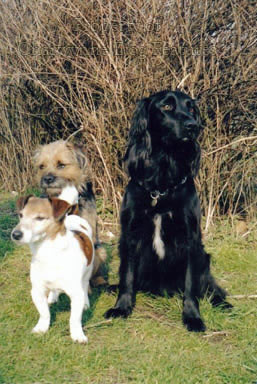

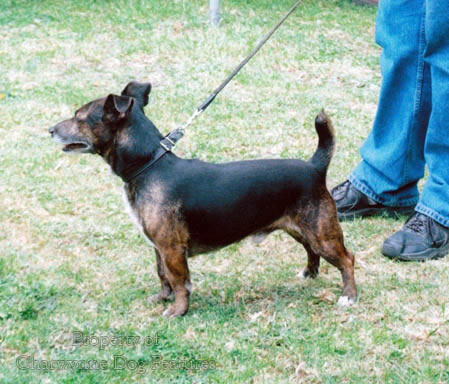 In the show ring the size of the dog can sometimes decide the breed, with some breeds knowingly using the Breed Standard to create a breed, based on size alone, to start with, before the dreaded 'breed points' are introduced to 'cement' the newly-created 'breed'. In some breeds, even at Hound Shows, measuring sticks have been utilised to ensure that size matters! The Beagle is a case in point; does a too-tall Beagle matter if the longer legs suit the country? Does a smaller Beagle somehow become not a Beagle due to its shoulder height? In the terrier breeds, the Kennel Club Standard sets out the word picture. The Airedale is deemed a terrier or earth-dog despite a desired height at shoulder of two feet. The Australian Terrier is expected to be 10 inches at the withers, the Bedlington 16ins., the Cairn 12ins., the Dandie 11ins., the Irish 19ins., the Lakeland 14ins., the Norfolk 10ins., the Parson Russell 14ins., the Welsh 15ins. and the Westie 11ins. Were the foxes in each area hunted of a different size? They too had to manoevre below ground and in stoney, craggy openings.
In the show ring the size of the dog can sometimes decide the breed, with some breeds knowingly using the Breed Standard to create a breed, based on size alone, to start with, before the dreaded 'breed points' are introduced to 'cement' the newly-created 'breed'. In some breeds, even at Hound Shows, measuring sticks have been utilised to ensure that size matters! The Beagle is a case in point; does a too-tall Beagle matter if the longer legs suit the country? Does a smaller Beagle somehow become not a Beagle due to its shoulder height? In the terrier breeds, the Kennel Club Standard sets out the word picture. The Airedale is deemed a terrier or earth-dog despite a desired height at shoulder of two feet. The Australian Terrier is expected to be 10 inches at the withers, the Bedlington 16ins., the Cairn 12ins., the Dandie 11ins., the Irish 19ins., the Lakeland 14ins., the Norfolk 10ins., the Parson Russell 14ins., the Welsh 15ins. and the Westie 11ins. Were the foxes in each area hunted of a different size? They too had to manoevre below ground and in stoney, craggy openings.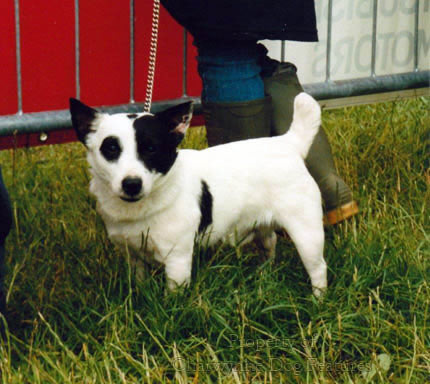
Why doesn't the Smooth Fox Terrier have size strictures when the Wire-haired version does? A Bull Terrier doesn't have a size restriction but its miniature version does. Can the Border Terrier truly be any size and still be of that breed - or is weight a better guide on size? Is a larger Westie and a smaller Cairn less typical for the breed? Isn't the anatomy for an earth-dog to succeed more important than dimensions? Can you imagine a hunt terrier being rated on its shoulder height? Why are measuring sticks considered of value when, in an age of obese, out-of-condition dogs, a weighing machine is never used? Why set out size-advice, terrier breed by terrier breed, that uses weight in some cases and height in others? It doesn't contribute to uniform breeding or judging - or make for a better breed 'signature'. 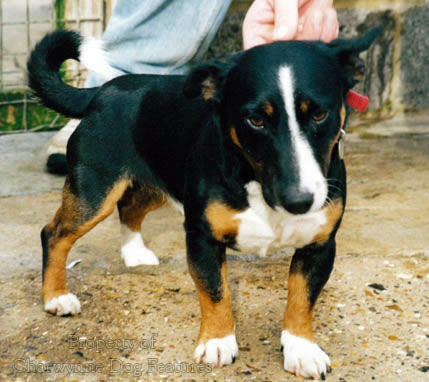
Owners and breeders of the really big breeds are prone to boast about how high their dog is or how heavy it is, despite the foolishness of this when bone structure and physical capability are considered. Why be impressed by a 200lb Mastiff when it can hardly walk? Who would be impressed by a 32" Irish Wolfhound or Great Dane when it has no power and behaves, even as an adult, like a huge puppy? For me, it's a form of indirect cruelty when you breed, knowingly, for great size unaccompanied by anatomical soundness. But then I am not content with dogs bred to be tiny - just to suit a human whim. Handbag-dogs tell you more about their owners than they think! What started off as size being relative to function has become size related solely to human needs not canine comfort. Some Jack Russells are just too short-legged to operate across the range of terrier skills. 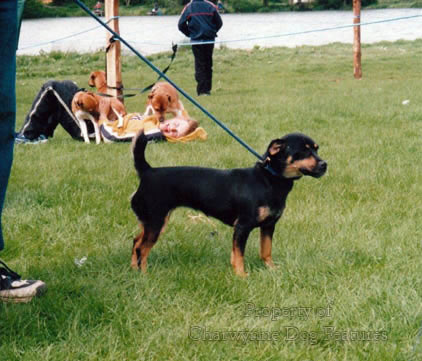
Many years ago, when working in Ireland, I used to pass a remote farm where they had a need for dogs that could herd sheep, catch rabbits and kill rats. To meet this need the family had their own method - but only one bitch! When a rabbit-catching lurcher-type replacement was needed, the bitch, much like a Bearded Collie, but not long-coated, was mated to Spence's Whippet in the nearest village, and a harsh-haired pup kept from the litter. When another sheepdog was needed, then she was mated to a fellow beardie-type in a farm at the end of the valley, a distantly related strongly-made dog. But occasionally, from this latter coupling, a 'dwarf Beardie' would crop up, maturing into a drop-eared, double-coated dog, 10" at the withers. The latter, a 'sport' from two working Beardies, would become their 'ratter' and looked astonishingly like a Skye Terrier. Such 'dwarfism' is a genetic freak but may created the Dachshund and the Basset Hound!
Of course, neither the sire nor the dam of these long-coated terriers was pure-bred but their owners were insistent that both were born of dogs like them, i.e. no resort to unlike dogs. The owners, whose ancestors had brought their dogs with them when they came over from Scotland, had no access to terrier blood and couldn't identify a Skye Terrier. This incident reminded me of the Basset varieties of the bigger French hounds and the 'Dachs' family in Germany, where the Dachsbracke has the longer legs, the Dachshund is a smaller equivalent and the Miniature Dachshund the dwarf specimen. The German Spitz, the Munsterlander, the Bull Terrier, the Bulldog, Schnauzers, Manchester and English White Terriers have each demonstrated the ability to produce size variations within a breed. The Pomeranian may have been a dwarf German Spitz and the English Toy Terrier a dwarf Manchester. Size has been used to found a breed. Should it be used to identify a terrier?